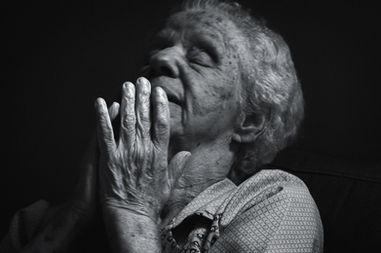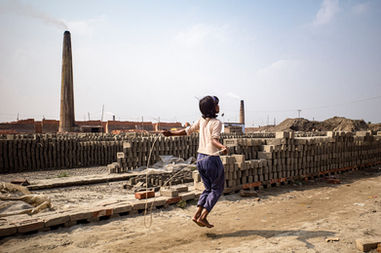
EXCLUSION ZONE
SEARCHING FOR CLUES IN CHERNOBYL
April 23, 2021
PICTORIAL STORY
Photography and story by Sophie Linckersdorff
Introduction by Karin Svadlenak Gomez
Sophie Linckersdorff is a German photojournalist and documentary photographer. She is currently based in Munich and in Berlin. Since 2018 she has been studying Photo Design at the University of Applied Sciences in Munich. She mainly works in the field of portraiture and documentary photography on personal long-term projects and international editorial assignments. Her projects have received several awards, and she has had diverse exhibitions. Sophie shared with us a stunning set of photos from the Pripyat Exclusion Zone in Chernobyl, where she photographed the remains of the former human presence.
“Man lives with death, but he doesn’t understand what it is.”
-
Svetlana Alexievich (Voices from Chernobyl: The Oral History of a Nuclear Disaster)
THE HISTORY
Thirty-five years ago, on Saturday, 26 April 1986, the No. 4 reactor in the Chernobyl Nuclear Power Plant, near the city of Pripyat, a Soviet city built especially for the power plant workers in the north of the Ukrainian SSR, then part of the Soviet Union, exploded. What happened was an uncontrolled nuclear chain reaction during a safety test that went terribly wrong. To this day it is considered the worst nuclear disaster in history. When a large amount of energy was suddenly released, two explosions broke the reactor core and the building housing it. For about nine days following the accident, the reactor fire that followed spewed highly contaminated nuclear radiation into the air. The radioactive pollution spread through winds across parts of the USSR and much of northern and western Europe — but the accident was kept a secret from other countries for days. It later turned out that the KGB had received reports on numerous structural and construction quality issues and deviations from the original design of the plant since 1973, but the Soviet government failed to act on it.
Because of increasing environmental radiation levels, initially an initial 10 kilometre radius exclusion zone was later expanded to 30 kilometres. Evacuations from the most affected city of Pripyat did not take place until 36 hours after the accident. By that time many people had been hospitalised with radiation sickness.
Later, hundreds of thousands of people were evacuated from the most severely affected areas in what are now the independent states of Belarus, Ukraine and Russia, and an area of more than 4,000 square kilometres lies largely abandoned, though some people have returned. The social consequences continue to be felt. A small number of people even continue to live in the most polluted areas.
The damaged reactor itself has been encased in a steel structure to keep further radiation within. Plants and wildlife have taken over areas that were abandoned by humans. Scientific research on pollution levels has been continuing, and some think it may be safe to live in the area except for the pollution hotspots.
In direct response to the Chernobyl disaster, the Vienna-based International Atomic Energy Agency initiated the creation of a Convention on Early Notification of a Nuclear Accident, and this now binds signatory member states to provide notification of any nuclear and radiation accidents that could affect other states, along with the Convention on Assistance in the Case of a Nuclear Accident or Radiological Emergency.
In recent years Pripyat was deemed safe for short visits and has now become one of Ukraine's tourist attractions, with visitors coming to experience and photograph this "lost place". Sophie was one of them, and this is her photo essay.
-min.jpg)
The sun is shining. No smoke, no gas. There is no shooting. Is that a war? And yet we are refugees. The familiar world - an unknown world,” said an evacuated woman in 1986. Death lurked everywhere, but this death is somehow different. Radioactivity is invisible, silent and tasteless.
The explosion of the Chernobyl nuclear reactor on April 26, 1986, devastated millions of people in the Ukrainian Belarusian border area. Since then, Chernobyl has been one of the world's collective nightmares. The catastrophe was beyond human imagination. How could one put the immeasurable suffering into words?
What is most memorable in Chernobyl is life "after": Cities without people, houses without people, relics of human existence. One wonders: what is it - past or future?
My first trip to the zone: It was December 2019. Birds sang, the trees bore needles, cities and villages lay before me. Everything looked very familiar. But something was missing: the people. Decaying relics bear witness to a high-tech city that flourished at the time.

With this photojournalistic work I would like to stimulate thought as well as to commemorate the countless victims of the man-made catastrophe. I see the depicted morbidity as a memorial, against an unconditional technology piety.

The views, thoughts, and opinions expressed in the text belong solely to the author, and are not necessarily shared by The Pictorial List and the team.












































